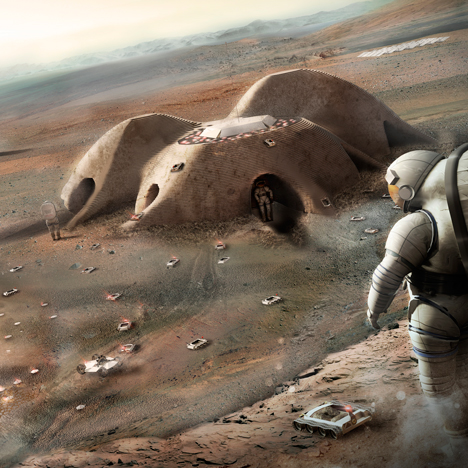Now, we’re not saying that if Matt Damon had spent his eighteen-month stint on Mars in a building made of this newly developed ‘Martian concrete’ he would have been any better off but, if the innovative material had been conceived at the time of filming, it may well have played a prominent role in his survival. Oops, apologies to anyone who hasn’t seen it.
The brainchild of Lin Wan, Roman Wendner and Gianluca Cusatis from Northwestern University in Evanston, Illinois, have come up with a new construction material by combining Martian soil with molten sulphur which, they claim, could be put to good use on the surface of the red planet. In time, it may even be used to build an entire village on Mars.
A significant problem encountered when trying to build architectural structures on Mars is that regular concrete can only be produced using water, a rare commodity up there at least in liquid form. However, this new material, being called ‘sulphur concrete’, doesn’t require any water to set.
Further advantages include a natural resistance to acid, salt, and the very low temperatures found on the dusty Martian planes. Sulphur concrete is also completely recyclable, allowing it to be easily returned to its liquid state and reused as new applications demand, with little to no waste. It’s also been discovered that the planet’s atmospheric pressure is especially suitable for the use of this particular material.

The use of sulphur as a bonding agent for aggregates has been the subject of investigation and experimentation for over a hundred years, according to the developers, albeit without the incorporation of Martian soil. Up to now, though, there have been problems in the process; sulphur can turn directly from a solid into a gas when placed in a vacuum and has been known to shrink in low temperatures, making it difficult to create a consistently and reliably strong building material.

With the huge interest in founding a colony on Mars – with or without Matt Damon – these days, including 200,000 volunteers eager to join NASA’s one-way Mars settlement plan, the need to develop some form of long term or even permanent housing has been at the forefront of the space agency’s research for some time.
NASA ran a competition last year that entertained different proposals for 3D-printed buildings to use in a Martian settlement, most of which included the planet’s surface soil as a construction material. Thanks to this new material development, those proposals are a significant step nearer to reality.

